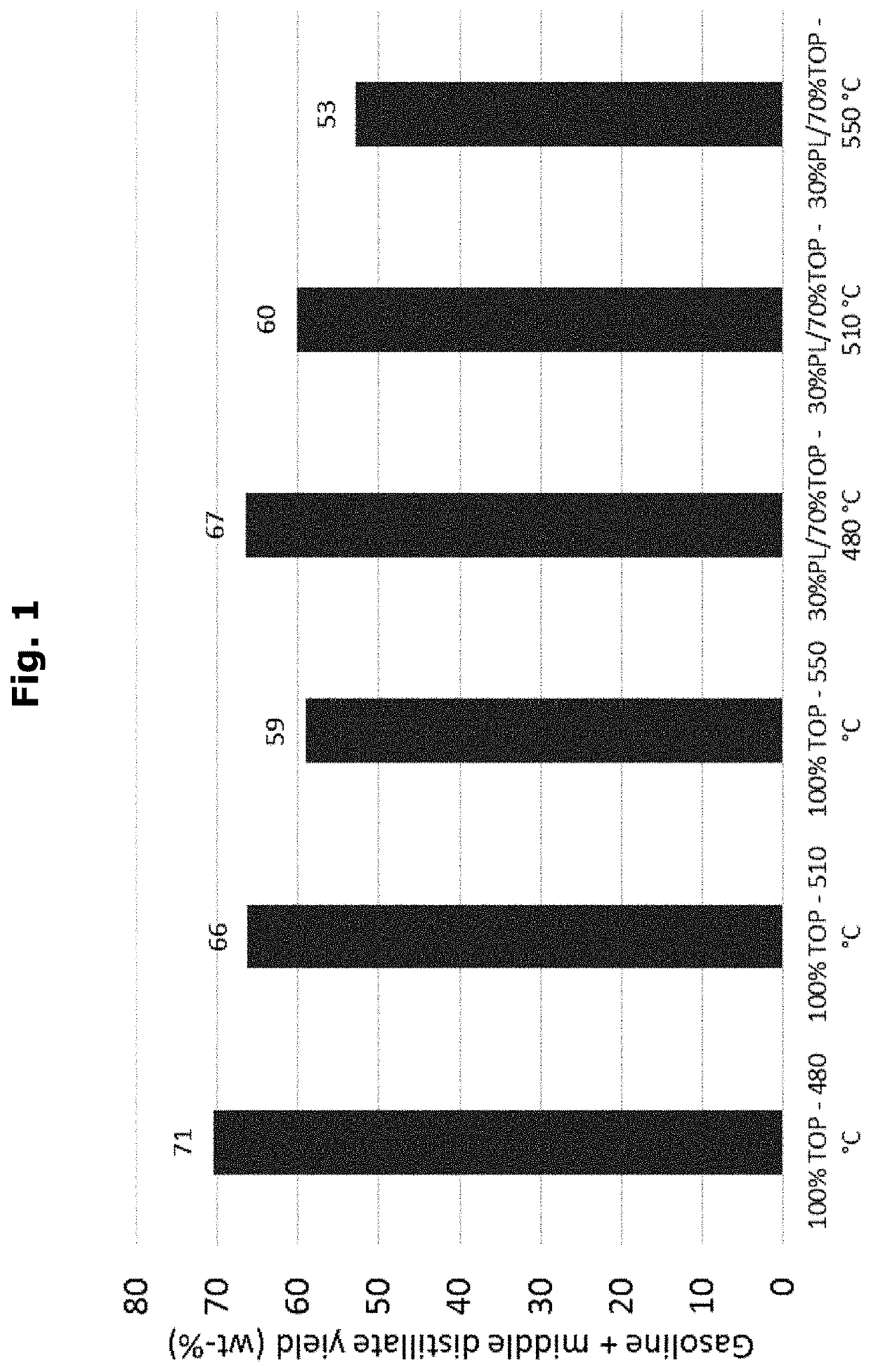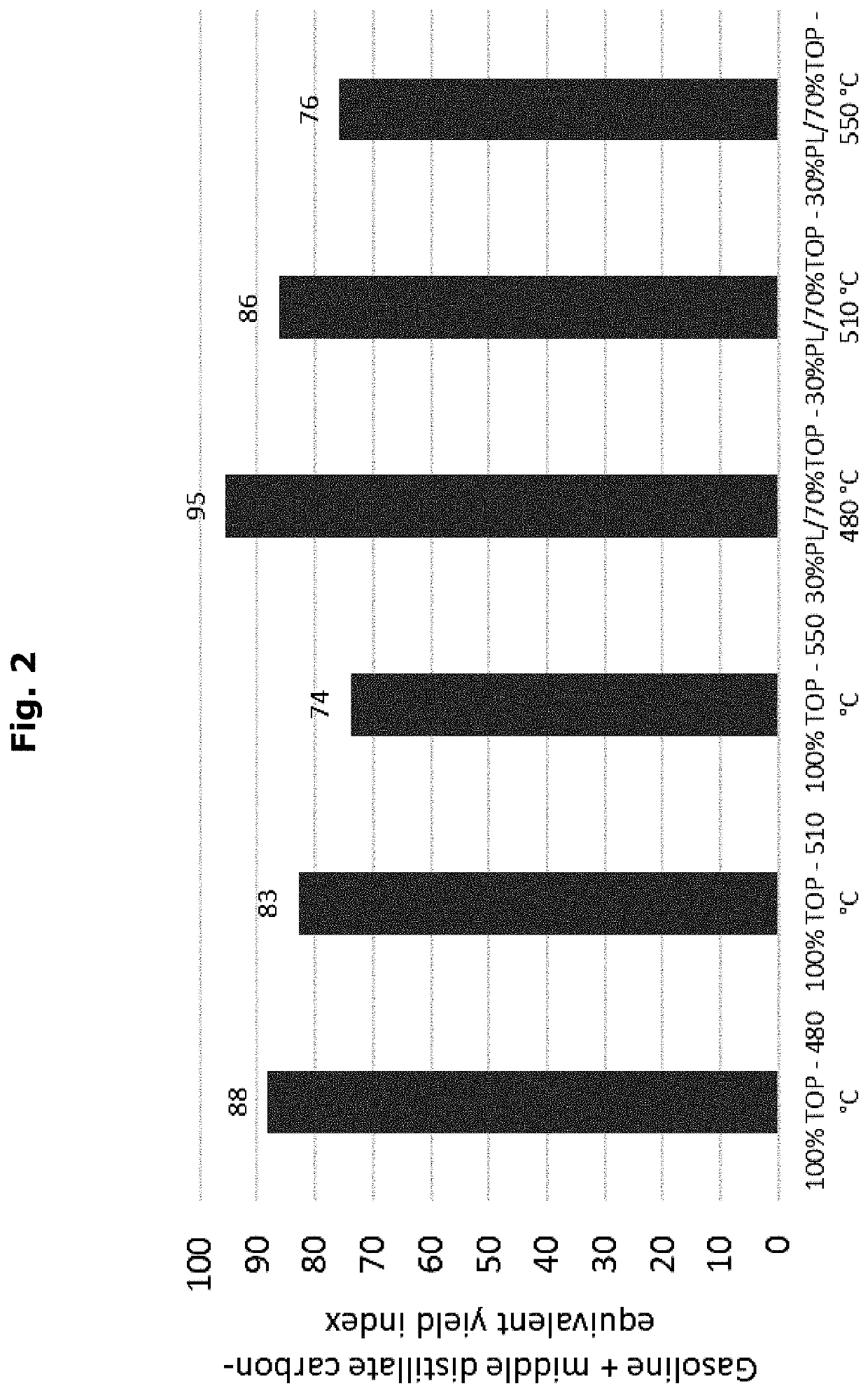Process for increasing gasoline and middle distillate selectivity in catalytic cracking
a technology of selectivity and catalyst cracking, which is applied in the direction of biofuels, fuels, hydrocarbon oil treatment products, etc., can solve the problems of high cost and high difficulty in catalytic cracking of pure pl, and achieve the effects of low cost, good yield of valuable transportation fuel components, and easy handling
- Summary
- Abstract
- Description
- Claims
- Application Information
AI Technical Summary
Benefits of technology
Problems solved by technology
Method used
Image
Examples
example 1
[0082]A commercially available TOP product (obtained as a distillation residue after distilling crude tall oil at reduced pressure) was blended with a commercially available PL (wood-derived fast pyrolysis bio-oil) in a ratio TOP:PL of 70:30 by weight.
[0083]The mixture was subjected to catalytic cracking at a temperature of 480° C. under ambient pressure (1 bar absolute) using a particulate zeolite-containing cracking catalyst.
examples 2 and 3
[0084]The thermal catalytic cracking was performed according to Example 1 except that the temperature was set to 510° C. (Example 2) and 550° C. (Example 3), respectively.
PUM
 Login to View More
Login to View More Abstract
Description
Claims
Application Information
 Login to View More
Login to View More - R&D
- Intellectual Property
- Life Sciences
- Materials
- Tech Scout
- Unparalleled Data Quality
- Higher Quality Content
- 60% Fewer Hallucinations
Browse by: Latest US Patents, China's latest patents, Technical Efficacy Thesaurus, Application Domain, Technology Topic, Popular Technical Reports.
© 2025 PatSnap. All rights reserved.Legal|Privacy policy|Modern Slavery Act Transparency Statement|Sitemap|About US| Contact US: help@patsnap.com


